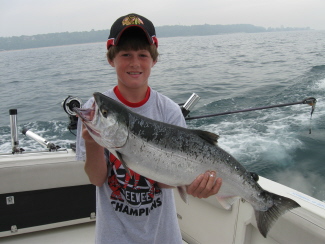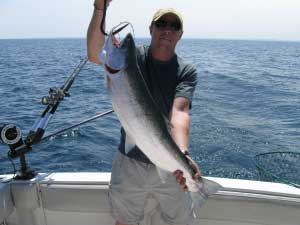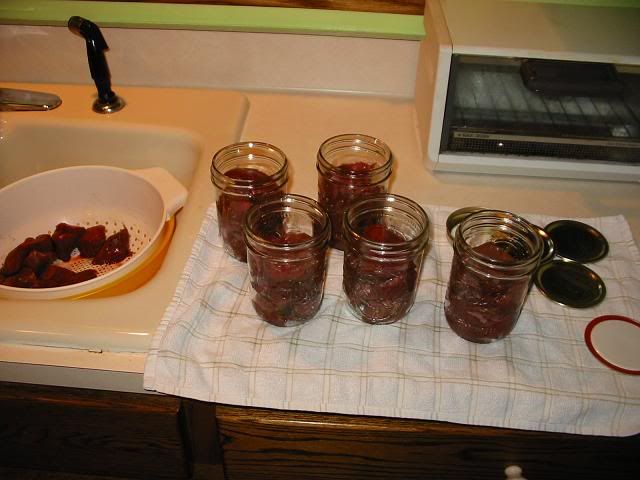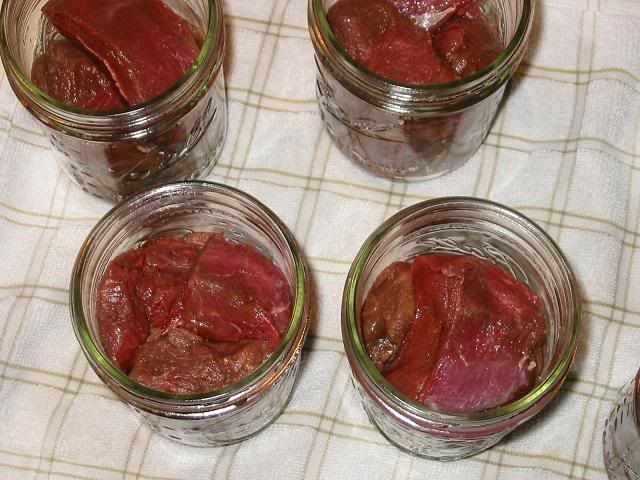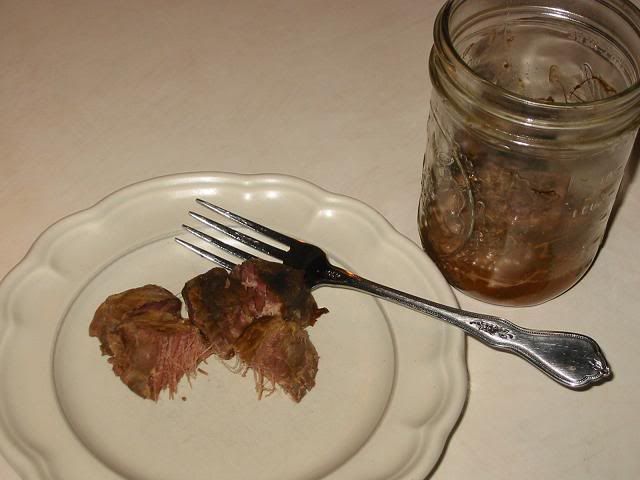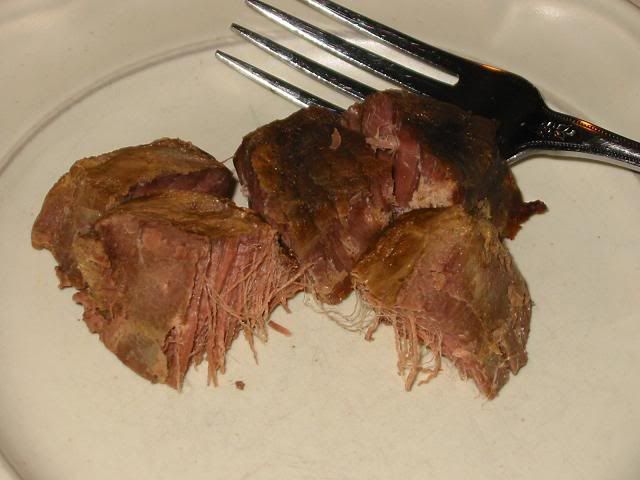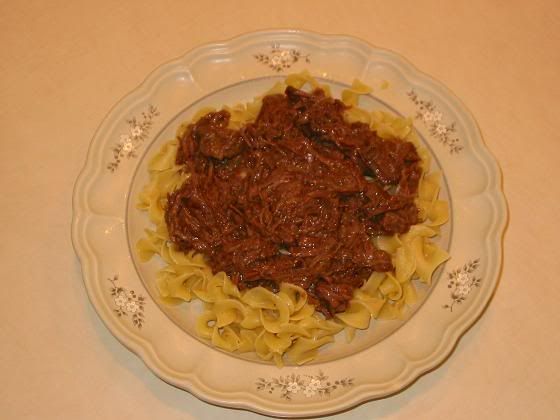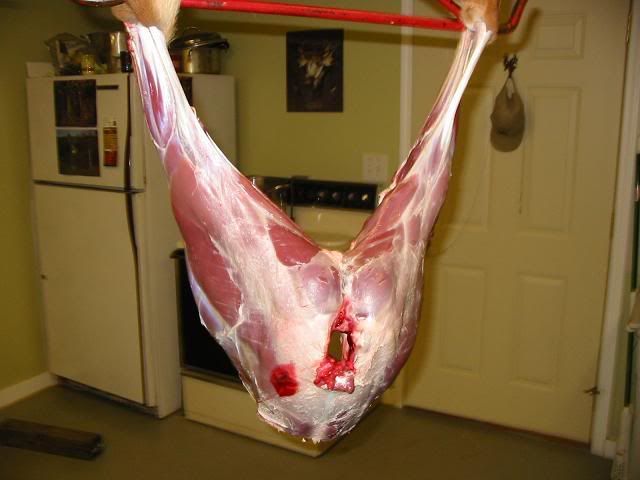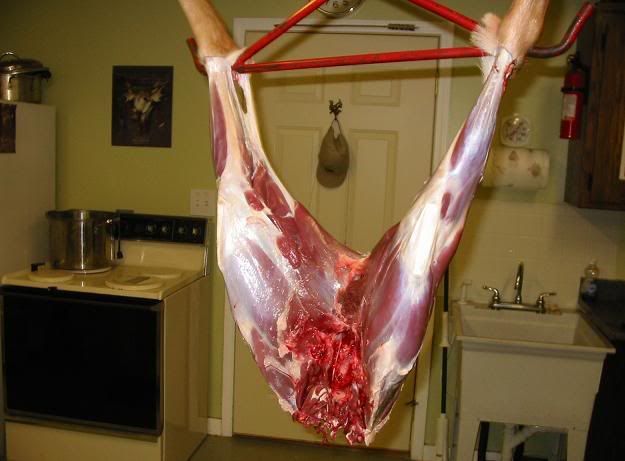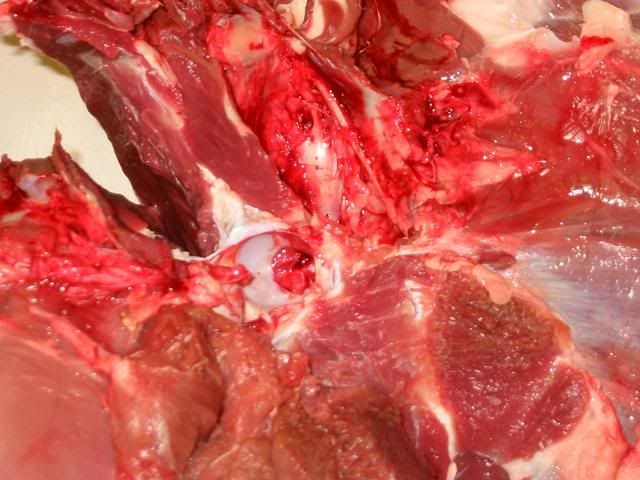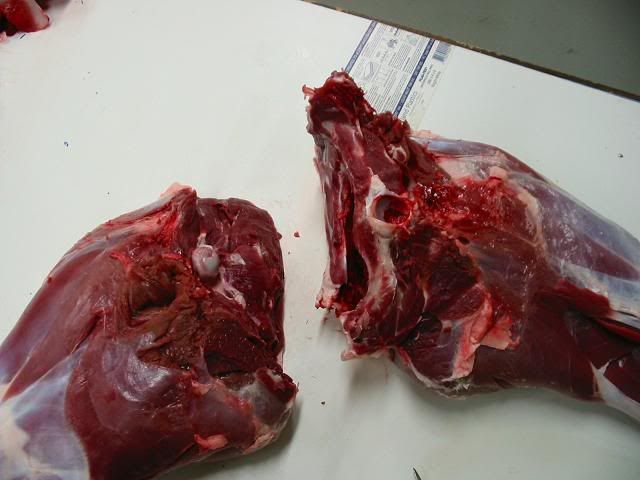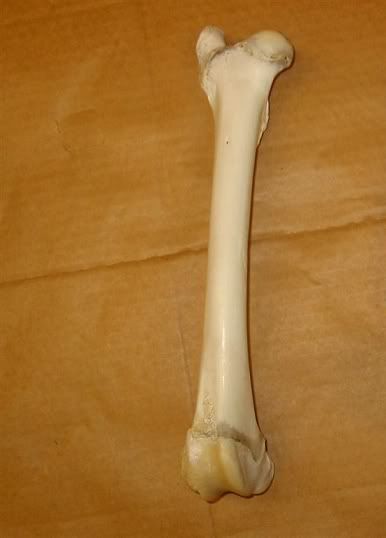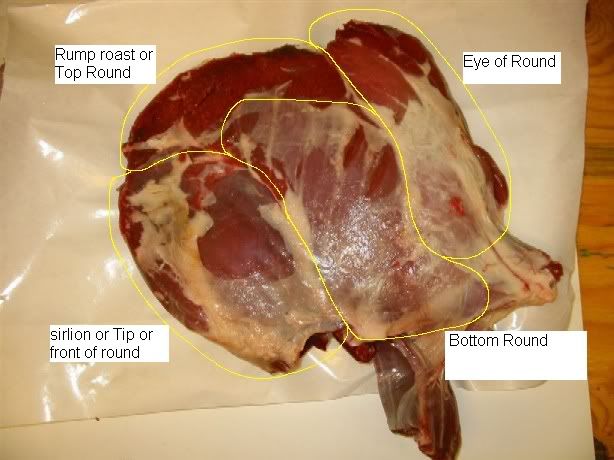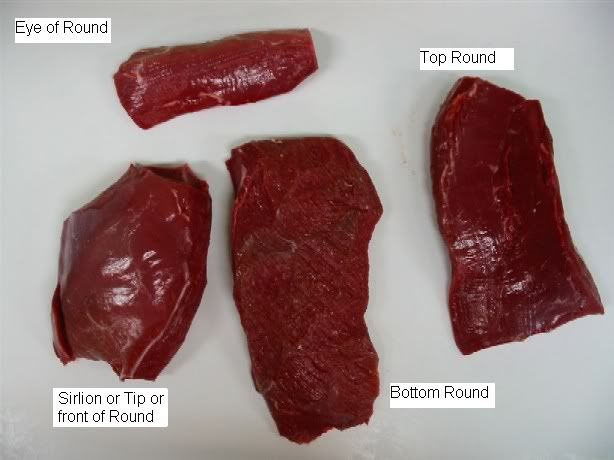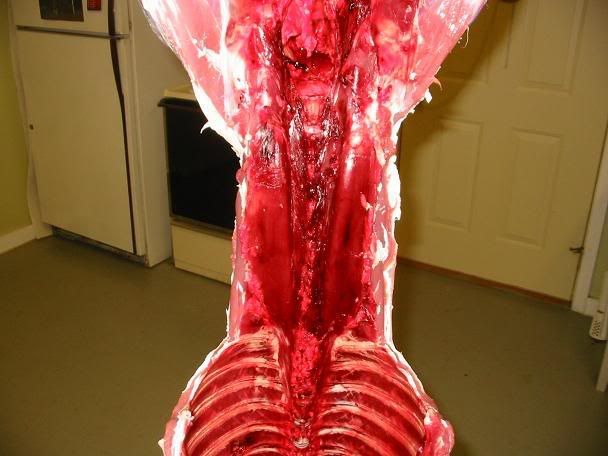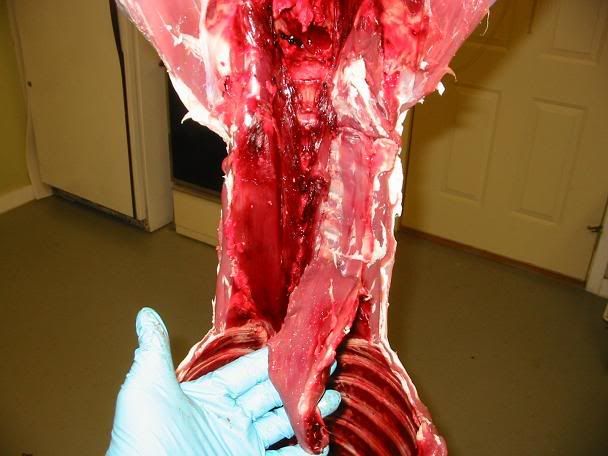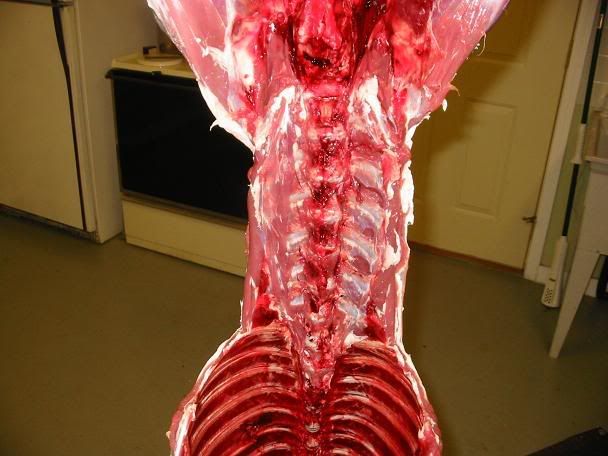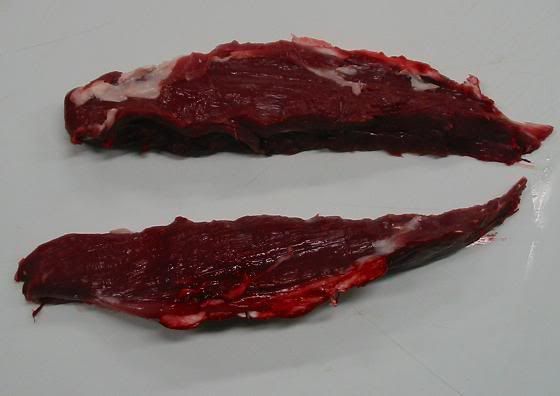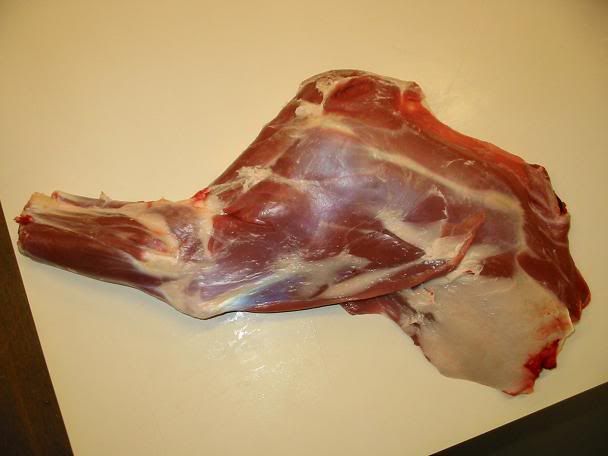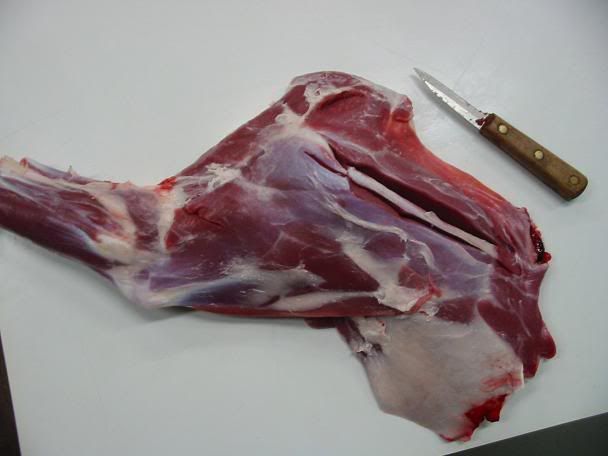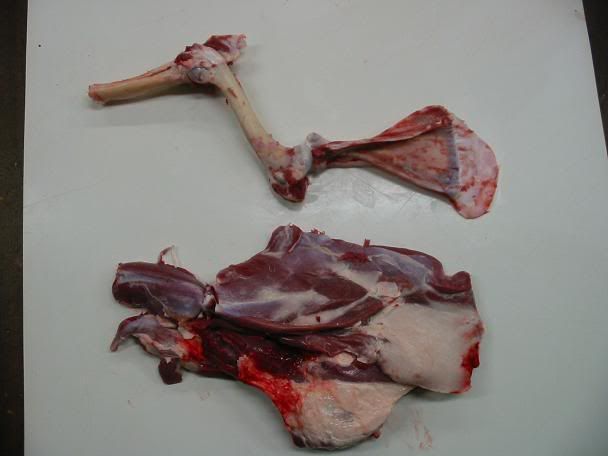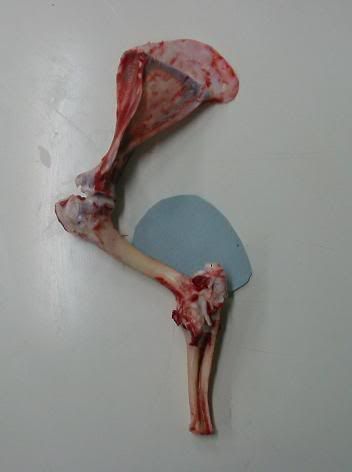301
Great Lakes Fishing / Catching Moody Fish
« on: March 23, 2010, 12:20:36 PM »
Catching Moody Fish
By Capt. Jim Hirt
From time to time we all can use a little help. These changes in thinking or additions to your fishing arsenal will improve your success. The speed of your bait whether it is a spoon, jig, or crankbait is important. The right lure at the wrong speed will be less productive.
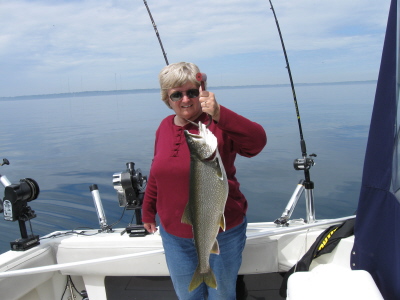
The correct speed is dictated by many variables.
Always consider the mood of fish and the environment they are in. This will help you find the best speed. Mood is defined by weather and the time of year. High and low barometric pressure are a part of the weather question. They both have a significant impact on the mood of all fish. Activity level in fish will change with the movement or lack of barometer movement. You must know what the weather has been preceding your fishing trip. This information will set the stage giving you the information you can use to your advantage. A clear blue high sky after a low pressure front is every anglers nightmare. Fish get spooky, neutral or negative in these conditions.
A slow spot on the spot presentation is key.
Inactivity is normal, pick your favorite locations on any body of water and look for your target species in the next break to deeper water. Work smaller spoons, lures or baits in a slow presentation. If motor trolling is your method of fishing use small spoons. Present them at slow speeds and fish them near the bottom. On the other hand steady barometric pressure for an extended period of time with overcast sky conditions is time to grab your pole and to head for the water. Don't miss these ideal days. The fish will be up on the shallow flats, near shore and active. Pound these fish with big baits and fast erratic actions.
Work hard, work fast and cover a lot of water.
This sets up a great opportunity for trolling big water. The correct lure color for overcast will put more fish in the boat. Silver or gold has long been the standard until resent years. Cutting edge anglers are now going to glow in the dark lures. The visibility of glow spoons far exceeds the old standards. Badger Tackle has great line up of glow spoons. For the anglers that run a boat speed from 2.0 to 3.5 MPH I would recommend the Vulcan magnum. This is a tough heavy weight spoon with a slim profile that fits well with most freshwater and saltwater forage base sizes. The other one I like is the Reaper. Run the regular size on clear calm days and magnum at first light, overcast or whenever you are down deep or in a low light presentation. The Reaper is a wide spoon with a crippled baitfish action for trolling at speeds of 1.0 to 2.5. The Striper and Salmon fishermen say it is a perfect match to the Shad and Alewife forage. Both are exclusively sold at http://www.badgertackle.com/ you won't be disappointed.
Time of year is also to be considered.
Time of year is also to be considered when trying to catch moody fish. As the seasons change so do the temperatures of the water. Fish are cold blooded and their metabolism changes as their body temp changes. Most anglers know there are cold and warm water species of fish. Which means all fish if given a choice will find their preferred temperature range. In fact too high or too low beyond their limits will cause stress and eventual death. In large fresh water lakes, the time of day isn't nearly as critical as locating the depth of the preferred temperature level for the fish species you're seeking. Lakes layer into three separate layers of water in the spring and stay that way until cold weather. The middle layer, where there is a larger concentration of dissolved oxygen, baitfish and therefore predator fish, is called the thermocline. It can usually be found any where from ten feet to the bottom. This is a temperature layer as well as an oxygen-saturated layer and fish will relate to it as both a comfort zone and one where their body metabolism functions the most efficiently. These fish will be suspended and feeding on alewives, smelt or other forage fish.
The peak feeding and optimum temperatures
The peak feeding and optimum temperature for Coho and Chinook is 52* with an active range from 44* to 58*. For lake trout, the peak feeding and optimum temperature is 51* with activity from 43* to 53*. Fish will rarely venture out of these zones, once stratification has taken place, except to catch a meal and then will quickly return to it. One thing to remember when fishing the thermocline is that its depth can change from day to day because of wind and wave action. It may be several feet deeper or shallower from one day to the next so you'll have to relocate it each time you go out. Having said all that, when fishing in water temperatures near the bottom of your target species preferred temp, adjust to small spoons in a slow presentation. At their optimum temp go aggressive with large baits in quick presentations. Most anglers under estimate the speed of their quarry. Good Luck let's go fishing! Jim charters out of Milwaukee, WI. with Blue Max Charters. He can be reached at 414-828-1094 or visit his web site at http://www.bluemaxcharters.com Copyright? 2010, James J. Hirt, All Rights Reserved.
By Capt. Jim Hirt
From time to time we all can use a little help. These changes in thinking or additions to your fishing arsenal will improve your success. The speed of your bait whether it is a spoon, jig, or crankbait is important. The right lure at the wrong speed will be less productive.

Nita and a 11 pound 4 ounce Lake Trout
The correct speed is dictated by many variables.
Always consider the mood of fish and the environment they are in. This will help you find the best speed. Mood is defined by weather and the time of year. High and low barometric pressure are a part of the weather question. They both have a significant impact on the mood of all fish. Activity level in fish will change with the movement or lack of barometer movement. You must know what the weather has been preceding your fishing trip. This information will set the stage giving you the information you can use to your advantage. A clear blue high sky after a low pressure front is every anglers nightmare. Fish get spooky, neutral or negative in these conditions.
A slow spot on the spot presentation is key.
Inactivity is normal, pick your favorite locations on any body of water and look for your target species in the next break to deeper water. Work smaller spoons, lures or baits in a slow presentation. If motor trolling is your method of fishing use small spoons. Present them at slow speeds and fish them near the bottom. On the other hand steady barometric pressure for an extended period of time with overcast sky conditions is time to grab your pole and to head for the water. Don't miss these ideal days. The fish will be up on the shallow flats, near shore and active. Pound these fish with big baits and fast erratic actions.
Work hard, work fast and cover a lot of water.
This sets up a great opportunity for trolling big water. The correct lure color for overcast will put more fish in the boat. Silver or gold has long been the standard until resent years. Cutting edge anglers are now going to glow in the dark lures. The visibility of glow spoons far exceeds the old standards. Badger Tackle has great line up of glow spoons. For the anglers that run a boat speed from 2.0 to 3.5 MPH I would recommend the Vulcan magnum. This is a tough heavy weight spoon with a slim profile that fits well with most freshwater and saltwater forage base sizes. The other one I like is the Reaper. Run the regular size on clear calm days and magnum at first light, overcast or whenever you are down deep or in a low light presentation. The Reaper is a wide spoon with a crippled baitfish action for trolling at speeds of 1.0 to 2.5. The Striper and Salmon fishermen say it is a perfect match to the Shad and Alewife forage. Both are exclusively sold at http://www.badgertackle.com/ you won't be disappointed.
Time of year is also to be considered.
Time of year is also to be considered when trying to catch moody fish. As the seasons change so do the temperatures of the water. Fish are cold blooded and their metabolism changes as their body temp changes. Most anglers know there are cold and warm water species of fish. Which means all fish if given a choice will find their preferred temperature range. In fact too high or too low beyond their limits will cause stress and eventual death. In large fresh water lakes, the time of day isn't nearly as critical as locating the depth of the preferred temperature level for the fish species you're seeking. Lakes layer into three separate layers of water in the spring and stay that way until cold weather. The middle layer, where there is a larger concentration of dissolved oxygen, baitfish and therefore predator fish, is called the thermocline. It can usually be found any where from ten feet to the bottom. This is a temperature layer as well as an oxygen-saturated layer and fish will relate to it as both a comfort zone and one where their body metabolism functions the most efficiently. These fish will be suspended and feeding on alewives, smelt or other forage fish.
The peak feeding and optimum temperatures
The peak feeding and optimum temperature for Coho and Chinook is 52* with an active range from 44* to 58*. For lake trout, the peak feeding and optimum temperature is 51* with activity from 43* to 53*. Fish will rarely venture out of these zones, once stratification has taken place, except to catch a meal and then will quickly return to it. One thing to remember when fishing the thermocline is that its depth can change from day to day because of wind and wave action. It may be several feet deeper or shallower from one day to the next so you'll have to relocate it each time you go out. Having said all that, when fishing in water temperatures near the bottom of your target species preferred temp, adjust to small spoons in a slow presentation. At their optimum temp go aggressive with large baits in quick presentations. Most anglers under estimate the speed of their quarry. Good Luck let's go fishing! Jim charters out of Milwaukee, WI. with Blue Max Charters. He can be reached at 414-828-1094 or visit his web site at http://www.bluemaxcharters.com Copyright? 2010, James J. Hirt, All Rights Reserved.


